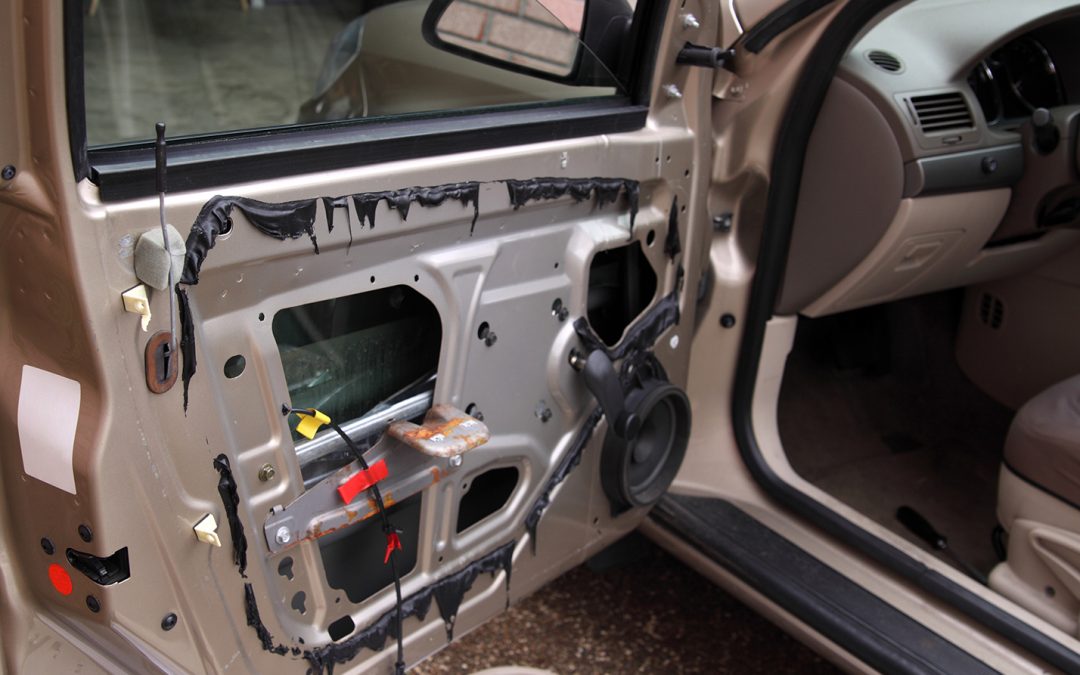One of the most popular options available in modern automobiles are power windows. In fact, power windows have become so popular in recent years that many automakers now offer them as standard equipment, even in entry level vehicles.
Whether discussing electronic motor driven systems that are used to operate passenger door windows, rear hatch windows, or even vent glasses, the increase in their level of reliability over the last few years bears mention. This can be partially attributed to the experience of automakers but it is primarily due to more powerful gear reduction type electric motors. These motors are more durable, quieter, and faster than power window motors used in older vehicles.
Automotive power windows derive power from the battery electrical system. Typically, battery voltage is routed to the fuse panel where a fuse, relay, or circuit breaker is used to transfer voltage to the power window master switch (or control module). The master switch is usually located in the driver door or the console. It is called a master switch because it operates all the power windows in the vehicle and contains the window lock-out switch (if applicable). Additionally, each door which houses a power window assembly is equipped with a single switch that operates only that window.
Many late model vehicles also route window control systems through some type of general electrical module (GEM), body control module (BCM) or window control module (WCM). This is a typical system and some vehicle power window control systems will be different. Check your vehicle service manual before attempting to diagnose a power window electrical malfunction.
Word of warning: Any related electronic controllers should be disconnected before testing power window electrical circuit resistance/continuity with a digital volt/ohmmeter (DVOM).
Each power window switch is normally supplied a battery voltage signal (with the ignition switch on). The appropriate switch must be manually depressed for window operation. The master switch may allow the driver to depress a particular button for an extra second so that the window may fully retract with one touch. At any rate, when the switch is depressed, the appropriate switch provides the respective electronic motor with a battery voltage signal and a ground. This causes the electronic motor to spin and operate the window in the desired direction. When the switch is depressed in the opposite direction, the voltage and ground signal to the electric motor are reversed; causing the motor to spin in the opposite direction and the window to move in the opposite direction. Window operation is accomplished using the motor and a regulator assembly, which will be discussed in detail below. In the bottom of the door there are “stops”, “cradles”, or “rests” that stop the glass from moving and cause the motor to overload slightly. This overload deactivates the switch and discontinues the supply of voltage to the motor.
The glass is set in a pair of tracks with stops on top and bottom. Window guides are often used to hold the glass firmly in the tracks and are adjustable. The guides may be permanently attached to the glass or removable (usually sold as a separate item).
In addition to the electric motor, the window regulator is an integral part of the power window system. The regulator is riveted (or bolted) inside the door and the electric motor is affixed to it. A conglomeration of tracks, rollers, sprockets, and cables make up the regulator which supports the weight of the window glass. The glass may be glued or bolted to the regulator. It might also be connected to the regulator with some type of roller device.
Automakers use three basic types of window regulators in their power window systems. In all these systems, an electric motor with a sprocket provides the momentum. The difference is in how the regulator functions after the gears mesh.
Here is a basic overview of the different types of regulators: A word of warning: The inside edges of the door skin can be very sharp. Use caution when placing your hand inside the door to make repairs.
Direct Drive Regulator
This type of regulator is commonly found in one of two design configurations. The simple stationary arm direct drive regulator and the scissor type direct drive regulator. The single arm direct drive actuator is, as the name implies, composed of a single arm that has a toothed or splined drive integrated into it. The teeth on one end of the regulator arm mesh with the teeth on the gear that is driven by the electric motor. On the opposite end of the regulator arm, a small roller slips into a track that is attached to the window glass. As the power window motor turns, the teeth on the regulator arm are turned; pivoting the arm and opening or closing the window as demanded by a signal from the respective switch.
The scissor type direct drive regulator utilizes a pair of tracks that are mounted horizontally on the inside of the door. A scissor type device is attached to the window glass and the four corners of the scissor slide into the tracks on small plastic rollers. In the center of the scissor device, there are teeth which mesh with the gear on the electric motor. When the motor turns, the scissor device provides even pressure to the glass and forces it upward or downward as requested.
Both types of these direct drive power window regulators are often equipped with a high-tension steel spring. Use caution when servicing them as the spring may unload when the window motor is removed and the machined edges of the regulator arms may be very sharp.
High Tension Cable Regulator
This type of power window regulator is the most common one used in late model vehicles. It is very fast and reliable but not usually serviceable without the window motor. This tends to drive up the cost of the overall repair when the regulator is defective but also makes replacement much easier.
The high-tension cable regulator is composed of a thin steel cable (partially enclosed in a plastic housing), a mounting bracket (primarily for the electric motor), a single track with a roller that attaches to the glass, and a reel around which the steel cable is wound.
The reel is positioned near the center of the cable and driven by the electric motor. As the electric motor turns, the cable (without the plastic housing) is wound and unwound around the reel. Grommets on each end of the plastic housing, hold it firmly in place so that it can be reeled up properly. The ends of the steel cable pull the roller (and the window glass) up and down the track as requested. The electric motor drive provides constant tension on the cable.
The most common failure in this type of power window system is when the cable becomes frayed or breaks. This can result in a noise upon failure and the window glass being stuck in one position. The window glass may also slide up or down manually when this type of failure occurs. Take care with the glass if it seems to slide down without prompting.
Low Tension Polymer Tape Regulator
This type of window regulator is used less frequently than in earlier years. It makes use of a thick plastic tape (sometimes called a worm) with square or round holes punched from it in an even pattern (kind of like a belt). The tape is trapped inside of a metal track that makes a complete loop (not necessarily a circle). The window roller is attached to the tape inside of the track, at the appropriate point. As the electric motor turns, a sprocket (with teeth designed to mesh into the pattern of the tape) slides the tape through the track. The window roller is forced upward or downward depending upon demand from the window switch.

